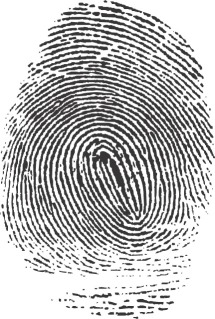In a piece of true science detective work, researchers at the Laboratoire de Physique Statistique in Paris have found another reason why we have fingerprints.
 It's been known for a while that the distinctive ridges on the pads of our fingers help us to grip things, but now Julien Schiebert and colleagues have shown that fingerprints also help us to feel fine textures and tiny objects, less that 200 micrometers, through vibrations.
It's been known for a while that the distinctive ridges on the pads of our fingers help us to grip things, but now Julien Schiebert and colleagues have shown that fingerprints also help us to feel fine textures and tiny objects, less that 200 micrometers, through vibrations.
Writing in the journal Science, they developed a special mechanical sensor which is fitted with a rubbery cap to act like a fingertip. Using either smooth caps, or ones ridged to simulate fingerprints, they rubbed their artificial finger across finely textured surfaces.
They found that the cap with a 'fingerprint' was made to vibrate by the contact, at a frequency of around 250Hz, that's 250 vibrations per second. This coincides with the sensitive range of a type of nerve endings found in the skin, called "Pacinian corpuscles".
Two types of nerve ending are known to be involved in detecting texture, slow reacting nerves are responsible for identifying relatively coarse textures by detecting different pressures at different places on the skin, while fine details are reported by the Pacinian nerve endings.
They have only tested this with a series of straight, parallel ridges, so not exactly the same as the swirly lines of our fingerprints, but their findings suggest that our fingerprints actually fine tune the vibrations, selectively amplifying certain frequencies to ensure our nerves can pick up the fine details.
- Previous Turning up the heat on cereal genome
- Next Watch out for wi-fi










Comments
Add a comment